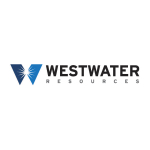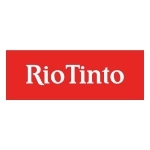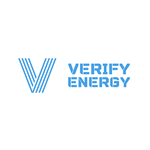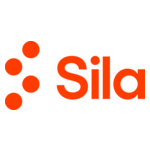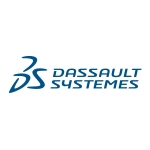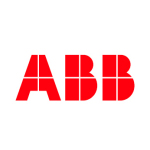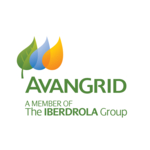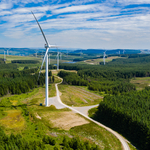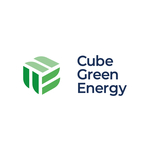ABERDEEN, Scotland--(BUSINESS WIRE)--KNOT Offshore Partners LP (NYSE:KNOP):
Financial Highlights
For the three months ended September 30, 2022, KNOT Offshore Partners LP (“KNOT Offshore Partners” or the “Partnership”):
-
Generated total revenues of $67.8 million, operating income of $15.7 million and net income of $16.0 million.
-
Generated Adjusted EBITDA of $43.3 million (1)
-
Generated distributable cash flow of $10.9 million (1)
-
Reported $74.6 million in available liquidity, which included cash and cash equivalents of $49.6 million at September 30, 2022.
Other Partnership Highlights and Events
-
Fleet operated with 99.7% utilization for scheduled operations in the third quarter of 2022 and 92.8% utilization taking into account the scheduled drydockings of the Lena Knutsen and the Windsor Knutsen.
-
On October 13, 2022, the Partnership declared a quarterly cash distribution of $0.52 per common and Class B unit with respect to the quarter ended September 30, 2022, paid on November 9, 2022, to all common and Class B unitholders of record on October 27, 2022. On the same day, the Partnership declared a quarterly cash distribution to holders of Series A Convertible Preferred Units (“Series A Preferred Units”) with respect to the quarter ended September 30, 2022 in an aggregate amount equal to $1.7 million.
-
The Bodil Knutsen continues to operate under a rolling time charter contract with a subsidiary of the Partnership’s sponsor, Knutsen NYK Offshore Tankers AS (“Knutsen NYK”). Knutsen NYK has exercised its one-month options to extend the time charter to date and has further options to extend the charter until June 2023.
-
In late August 2022, the Partnership entered into a new time charter contract for the Windsor Knutsen with Shell to commence in or around January 2023 for a fixed period of one year, with charterer’s option to extend the charter for one additional year.
-
As previously announced, on August 16, 2022, the Partnership entered into a new time charter agreement for the Lena Knutsen with a subsidiary of TotalEnergies which commenced on August 21, 2022. The charter is for a fixed period of six months, with charterer’s options to extend the charter by up to six further months.
-
As previously announced, on July 6, 2022, the charterer of the Hilda Knutsen, Eni Trading and Shipping S.p.A. (“Eni”), notified the Partnership of its intention to redeliver the vessel and, as a consequence, the vessel was returned to the Partnership on September 3, 2022. The Partnership is now marketing the vessel for new time charter employment. In the interim period, the Partnership and Knutsen NYK agreed for Knutsen NYK to time charter the vessel from the Partnership for a 90-day period plus three further 30-day option periods. This charter, at a reduced rate, commenced on September 3, 2022, and, if all options are taken by Knutsen NYK, would expire on or around March 2, 2023.
-
A new time charter agreement for the Tordis Knutsen with a subsidiary of the French oil major TotalEnergies commenced on September 10, 2022 for a fixed period of three months, with charterer’s options to extend the charter by up to two further three-month periods. TotalEnergies has exercised the first of its two three-month option periods and, if both options are taken by TotalEnergies, the charter would expire on or around June 10, 2023.
-
On November 17, 2022, the charterer of the Torill Knutsen, Eni, notified the Partnership of its intention to redeliver the vessel and, as a consequence, the vessel is currently expected to be returned to the Partnership on or around December 17, 2022. The Partnership is now marketing the vessel for new time charter employment.
-
The current time charter for the Brasil Knutsen with Galp Sinopec Brazil Services B.V. (“Galp”) expired in November 2022; however, the Partnership has entered into a new time charter contract with Galp, in direct continuation, for a period of one year, extending the vessel’s firm employment to November 2023.
-
As previously announced, the Partnership entered into a new time charter contract with Equinor for the Bodil Knutsen in the first quarter of 2022, to commence in the fourth quarter of 2023 or the first quarter of 2024. On November 24, 2022, Equinor confirmed its intention to fix the initial charter period for two years (rather than one year), with options to extend the charter by two further one-year periods being unchanged. If all options are taken by Equinor, the charter would expire around the end of 2027.
-
In accordance with the previously announced time charter agreement with Eni for the Ingrid Knutsen, the Partnership is expecting redelivery of the vessel on or around December 7, 2022. The Partnership is marketing the vessel for new time charter employment during 2023, in anticipation of the commencement of the new three-year Eni time charter contract in January 2024.
Gary Chapman, Chief Executive Officer and Chief Financial Officer of KNOT Offshore Partners LP, commented, “While our operational performance and utilization for scheduled operations remained at a high level throughout the third quarter, and our vessels in Brazil performed well, the Partnership’s financial results, liquidity and distributable cash flow reflect our heavy scheduled drydocking program. We remain focused on securing additional employment for our fleet for the next and coming quarters, during which pandemic and other related delays to the start-up of offshore oil production, particularly in the North Sea and in the Norwegian sector, have created an oversupply of shuttle tanker capacity at a time when we have multiple vessels coming back into the market, and which situation has also restricted the rates that are achievable for charter opportunities.
As we are concerned that this North Sea situation may continue in 2023, we are also considering opportunities for our North Sea-based vessels in the conventional tanker market as a potential alternate source of income and employment. However, in practice, and despite strong headline rates, the all-in returns from conventional tanker employment may be insufficient once utilization and fuel costs are considered. If we are unable to employ our North Sea vessels in the near term at acceptable rates, either on third party charters or in the conventional tanker market, we are likely to experience a material adverse effect on our distributable cash flow.
Looking out beyond 2023, based upon the committed capital expenditures of offshore oil producers in both the North Sea and Brazil, as well as the limited shuttle tanker supply growth in the coming years, we believe that the mid-term market environment will provide additional employment prospects across our fleet, as already evidenced by our progress in securing additional contracts that commence in late 2023 and beyond. However, in this near-term period of heightened uncertainty, we are working hard to secure additional charter coverage that supports our short-term cashflows and reinforces our balance sheet, without jeopardizing our ability to participate in the longer-term shuttle tanker opportunities that are the core of our business.”
| _______________________ |
|
(1)
|
|
EBITDA, Adjusted EBITDA and distributable cash flow are non-GAAP financial measures used by management and external users of the Partnership’s financial statements. Please see Appendix A for definitions of EBITDA, Adjusted EBITDA and distributable cash flow and a reconciliation to net income, the most directly comparable GAAP financial measure.
|
Financial Results Overview
Total revenues were $67.8 million for the three months ended September 30, 2022 (the “third quarter”), compared to $64.0 million for the three months ended June 30, 2022 (the “second quarter”). The increase is mainly due to the earnings from the time charter for the Synnøve Knutsen being included in the results of operations as of July 1, 2022.
Vessel operating expenses for the third quarter of 2022 were $23.1 million, an increase of $0.1 million from $23.0 million in the second quarter of 2022. The increase is due to Synnøve Knutsen being included in the results of operations as of July 1, 2022, offset by high bunker costs for the Windsor Knutsen, the Lena Knutsen, the Anna Knutsen and the Vigdis Knutsen in connection with their voyages to drydock in the second quarter of 2022.
Depreciation was $27.6 million for the third quarter, an increase of $1.5 million from $26.1 million in the second quarter.
General and administrative expenses were $1.4 million for the third quarter compared to $1.4 million for the second quarter.
As a result, operating income for the third quarter was $15.7 million, compared to $13.4 million for the second quarter.
Interest expense for the third quarter was $12.2 million, an increase of $3.9 million from $8.3 million for the second quarter. The increase is mainly due to an increase in the US dollar LIBOR rate, the inclusion of the Synnøve Knutsen in the fleet, the refinancing of the Torill Knutsen and increased utilization of the Partnership’s revolving credit facilities.
The realized and unrealized gain on derivative instruments was $12.4 million in the third quarter, compared to realized and unrealized gain of $5.1 million in the second quarter. The unrealized non-cash element of the mark-to-market gain was $12.7 million for the third quarter, compared to an unrealized gain of $6.7 million for the second quarter. The unrealized gain for the third quarter related to mark-to-market gain on interest rate swaps of $13.5 million and a loss of $0.8 million on foreign exchange contracts.
As a result, net income for the third quarter of 2022 was $16.0 million compared to $9.9 million for the second quarter of 2022.
Net income for the third quarter of 2022 increased by $2.5 million from net income of $13.5 million for the third quarter of 2021 to $16.0 million for the third quarter of 2022. Operating income for the third quarter of 2022 decreased by $5.4 million to $15.7 million, compared to an operating income of $21.1 million in the third quarter of 2021. This decrease is mainly due to higher operating expenses in the third quarter of 2022 related to bunker costs for the Windsor Knutsen and the Lena Knutsen in connection with their voyages from drydock. Total finance income for the third quarter of 2022 increased by $8.0 million to $0.5 million, compared to a finance expense of $7.5 million for the third quarter of 2021, mainly due to an increase in unrealized gain on derivative instruments.
Distributable cash flow was $10.9 million for the third quarter of 2022, compared to $9.4 million for the second quarter of 2022. The increase was a result of the Synnøve Knutsen being included in the results of operations as of July 1, 2022, along with higher fleet utilization in the third quarter compared to the second quarter of 2022. The distribution declared for the third quarter was $0.52 per common and Class B unit.
COVID-19
Time and costs related to the movement of maritime personnel and vessel operational logistics, including repairs and maintenance, remain above their historical average. However, the Partnership has continued to date to avoid any serious or sustained operational impacts from the coronavirus (“COVID-19”) pandemic. There have also been no effects on the Partnership’s contractual position. Enhanced protocols remain in place with a focus on ensuring the health and safety of our employees and crew onboard, while providing safe and reliable operations for our customers.
Operational Review
The Partnership’s vessels operated throughout the third quarter of 2022 with 99.7% utilization for scheduled operations and 92.8% utilization, taking into account the scheduled drydockings of the Lena Knutsen and the Windsor Knutsen which, together, were offhire as a result of their drydocks for 115 days in the third quarter of 2022.
The Windsor Knutsen successfully completed her planned fifteen-year special survey drydocking in Europe and returned to Brazil in August 2022. In October 2022, the vessel suffered a minor hydraulic leak from a bow thruster and the vessel was placed off hire. However, except for a deductible of 14 days, loss of hire insurance is expected to provide income potentially lost due to the incident, and hull and machinery insurance is expected to cover the majority of any costs incurred to repair above the deductible amount. The vessel returned to service in November 2022.
The Lena Knutsen successfully completed her planned five-year special survey drydocking in Europe. After drydocking, the vessel returned to Brazil and commenced on its charter with TotalEnergies on August 21, 2022, as previously announced. The charter is for a fixed period of six months with charterer’s options to extend the charter by up to six further months.
Financing and Liquidity
As of September 30, 2022, the Partnership had $74.6 million in available liquidity, which consisted of cash and cash equivalents of $49.6 million and $25.0 million of capacity under its revolving credit facilities. The revolving credit facilities mature between August 2023 and November 2023. The Partnership’s total interest-bearing obligations outstanding as of September 30, 2022 were $1,065.3 million ($1,058.4 million net of debt issuance costs). The average margin paid on the Partnership’s outstanding debt during the third quarter of 2022 was approximately 2.02% over LIBOR.
As of September 30, 2022, the Partnership had entered into various interest rate swap agreements for a total notional amount of $458.2 million to hedge against the interest rate risks of its variable rate borrowings. As of September 30, 2022, the Partnership receives interest based on three or six-month LIBOR and pays a weighted average interest rate of 1.9% under its interest rate swap agreements, which have an average maturity of approximately 3.2 years. The Partnership does not apply hedge accounting for derivative instruments, and its financial results are impacted by changes in the market value of such financial instruments.
As of September 30, 2022, the Partnership’s net exposure to floating interest rate fluctuations was approximately $363.0 million based on total interest-bearing contractual obligations of $1,065.3 million, less the Raquel Knutsen and Torill Knutsen sale and leaseback facilities of $194.5 million, less interest rate swaps of $458.2 million, and less cash and cash equivalents of $49.6 million. The Partnership’s outstanding interest-bearing contractual obligations of $1,065.3 million as of September 30, 2022 are repayable as follows:
(U.S. Dollars in thousands)
|
Sale & Leaseback
|
|
Period repayment
|
|
Balloon repayment
|
|
Total
|
Remainder of 2022
|
$
|
3 250
|
|
$
|
24 417
|
|
$
|
—
|
|
$
|
27 667
|
2023
|
|
13 161
|
|
|
77 840
|
|
|
255 906
|
|
|
346 907
|
2024
|
|
13 804
|
|
|
41 178
|
|
|
63 393
|
|
|
118 375
|
2025
|
|
14 399
|
|
|
33 109
|
|
|
136 583
|
|
|
184 091
|
2026
|
|
15 059
|
|
|
18 822
|
|
|
219 521
|
|
|
253 402
|
2027 and thereafter
|
|
134 871
|
|
|
—
|
|
|
—
|
|
|
134 871
|
Total
|
$
|
194 544
|
|
$
|
195 366
|
|
$
|
675 403
|
|
$
|
1 065 313
|
Acquisition of Synnøve Knutsen
On July 1, 2022, the Partnership’s wholly owned subsidiary, KNOT Shuttle Tankers AS, acquired KNOT Shuttle Tankers 35 AS (“KNOT 35”), the company that owns the shuttle tanker, Synnøve Knutsen, from Knutsen NYK (the “Synnøve Acquisition”). The purchase price was $119.0 million, less approximately $87.7 million of outstanding indebtedness related to the Synnøve Knutsen plus approximately $0.6 million for certain capitalized fees related to the financing of the vessel and other working capital purchase price adjustments of $5.9 million. The secured credit facility related to the vessel (the “Synnøve Facility”) is repayable in quarterly instalments with a final balloon payment of $71.1 million due at maturity in October 2025. The Synnøve Facility bears interest at an annual rate equal to LIBOR plus a margin of 1.75%. The purchase price was settled in cash.
The Synnøve Knutsen is operating in Brazil under a time charter with Equinor, which will expire in February 2027. The charterer has options to further extend the charter for up to three two-year periods and nine one-year periods. The Partnership’s board of directors (the “Board”) and the conflicts committee of the Board (the “Conflicts Committee”) approved the purchase price of the Synnøve Acquisition. The Conflicts Committee retained an outside financial advisor and outside legal counsel to assist with its evaluation of the Synnøve Acquisition.
Distributions
On October 13, 2022, the Partnership declared a quarterly cash distribution of $0.52 per common and Class B unit with respect to the quarter ended September 30, 2022, paid on November 9, 2022, to all common and Class B unitholders of record on October 27, 2022. On the same day, the Partnership declared a quarterly cash distribution to holders of Series A Preferred Units with respect to the quarter ended September 30, 2022 in an aggregate amount equal to $1.7 million.
Assets Owned by Knutsen NYK
In February 2021, Tuva Knutsen was delivered to Knutsen NYK from the yard and commenced on a five-year time charter contract with a wholly owned subsidiary of the French oil major TotalEnergies. TotalEnergies has options to extend the charter for up to a further ten years.
In November 2021, Live Knutsen was delivered to Knutsen NYK from the yard in China and commenced on a five-year time charter contract with Galp Sinopec for operation in Brazil. Galp has options to extend the charter for up to a further six years.
In June 2022, Daqing Knutsen was delivered to Knutsen NYK from the yard in China and commenced on a five-year time charter contract with PetroChina International (America) Inc for operation in Brazil. The charterer has options to extend the charter for up to a further five years.
In July 2022, Frida Knutsen was delivered to Knutsen NYK from the yard in Korea and will commence on a seven-year time charter contact with Eni for operation in North Sea. The charterer has options to extend the charter for up to a further three years.
Another vessel, Sindre Knutsen, was delivered to Knutsen NYK in August 2022 from the yard in Korea and will commence on a five-year time charter contract with Eni for operation in the North Sea. The charterer has options to extend the charter for up to a further five years.
In May 2022, Knutsen NYK entered into a new ten-year time charter contract with Petrobras for a vessel to be constructed and which will operate in Brazil where the charterer has the option to extend the charter by up to five further years. The vessel will be built in China and is expected to be delivered in late 2024.
In November 2022, Knutsen NYK entered into a new fifteen-year time charter contract with Petrobras for a vessel to be constructed and which will operate in Brazil where the charterer has an option to extend the charter by up to five further years. The vessel will be built in China and is expected to be delivered in early 2025.
Pursuant to the omnibus agreement the Partnership entered into with Knutsen NYK at the time of its initial public offering, the Partnership has the option to acquire from Knutsen NYK any offshore shuttle tankers that Knutsen NYK acquires or owns that are employed under charters for periods of five or more years.
There can be no assurance that the Partnership will acquire any additional vessels from Knutsen NYK.
Outlook
As of September 30, 2022, the Partnership’s fleet of eighteen vessels had an average age of 8.4 years (8.5 years as of June 30, 2022) and had charters with an average remaining fixed duration of 1.9 years (1.7 years as of June 30, 2022). In addition, the charterers of the Partnership’s time-chartered vessels had options to extend their charters by an additional 3.0 years on average (2.4 years as of June 30, 2022). As of September 30, 2022, the Partnership had $644 million of remaining contracted forward revenue, excluding options ($594 million as of June 30, 2022).
The Partnership’s earnings for the fourth quarter of 2022 will be affected by preparatory costs related to the scheduled ten-year special survey drydocking of the Carmen Knutsen which is due to take place in January 2023, off hire and costs above deductible amounts related to a minor repair carried out on the Windsor Knutsen and time spent by the vessel without employment in the quarter, the anticipated redelivery of the Ingrid Knutsen on or around December 7, 2022, the anticipated redelivery of the Torill Knutsen on or around December 17, 2022, and the short-term time charters of the Bodil Knutsen and Hilda Knutsen to Knutsen NYK that are at a reduced charter rate. The Tove Knutsen was offhire for 11 days in October 2022 to repair a minor problem with the vessel’s port crane, and the Synnøve Knutsen was offhire in October 2022 for 18 days due to a malfunction on the vessel’s controllable pitch propeller.
High oil production seen in Brazil has continued in the third quarter and we expect that this will continue into the foreseeable future as additional low-cost production capacity comes online during 2023 and beyond. As such, we believe that demand for shuttle tankers in Brazil, where 14 of our vessels typically operate, will also strengthen in 2023 and continue into the mid and long term, aided by a multi-year pipeline of investment in new FPSOs and related production infrastructure, as well as the lack of new shuttle tanker tonnage available to enter the Brazilian market before 2025.
In contrast, the delayed resumption of activity in the North Sea, and in particular in the Norwegian sector, continues to dampen shuttle tanker demand and charter rates where 4 of our 18 vessels typically operate. We believe this situation could persist in 2023 with demand for shuttle tankers remaining below the levels of available tonnage. Over several quarters, we expect the market to rebalance as we see our customers moving forward with offshore projects that were postponed or delayed, as countries increasingly prioritize oil production due to high oil prices and energy security concerns and as some older vessels also naturally exit the shuttle tanker market.
In the meantime, for any North Sea vessels that are unable to secure a suitable third party time charter contract conducting offshore loading activities, the Partnership will look to employ such vessels in the conventional tanker market if appropriate opportunities can be found, based on market rates, and taking into consideration potential exposure to significant offhire time between voyages, and fuel and repositioning costs associated with this type of employment. However, if we are unable to employ our North Sea vessels in the near term at acceptable rates, either on third party charters or in the conventional tanker market, we are likely to experience a material adverse effect on our distributable cash flow, in particular given the scheduled vessel drydocks due in 2023.
The majority of the global fleet of around 76 shuttle tankers remain secured on mid or long term time charters, playing an integral role in our customers’ supply chains, and with only 6 new vessels scheduled to deliver before the end of 2025, the Partnership believes that the medium-term outlook beyond 2023 for the shuttle tanker market remains favorable given the publicly announced investment decisions, production sharing agreements and production forecasts made by our customers, including the number of FPSO orders intended for, in particular, the Brazilian Pre-salt fields. As such, the Partnership believes that these factors will drive demand for existing and for newbuild shuttle tankers, and that shuttle tanker demand growth will outpace net shuttle tanker supply growth in the mid to long-term.
While uncertainty caused by the ongoing war in Ukraine remains, the desire from developed economies for greater immediate and short-term energy security, continuing high oil prices and the increases seen in newbuild vessel prices in 2022 are all factors that could increase demand for shuttle and conventional oil tankers, both in the short and medium term.
Contacts
Gary Chapman
+44 1224 618 420
This email address is being protected from spambots. You need JavaScript enabled to view it.
Read full story here 







